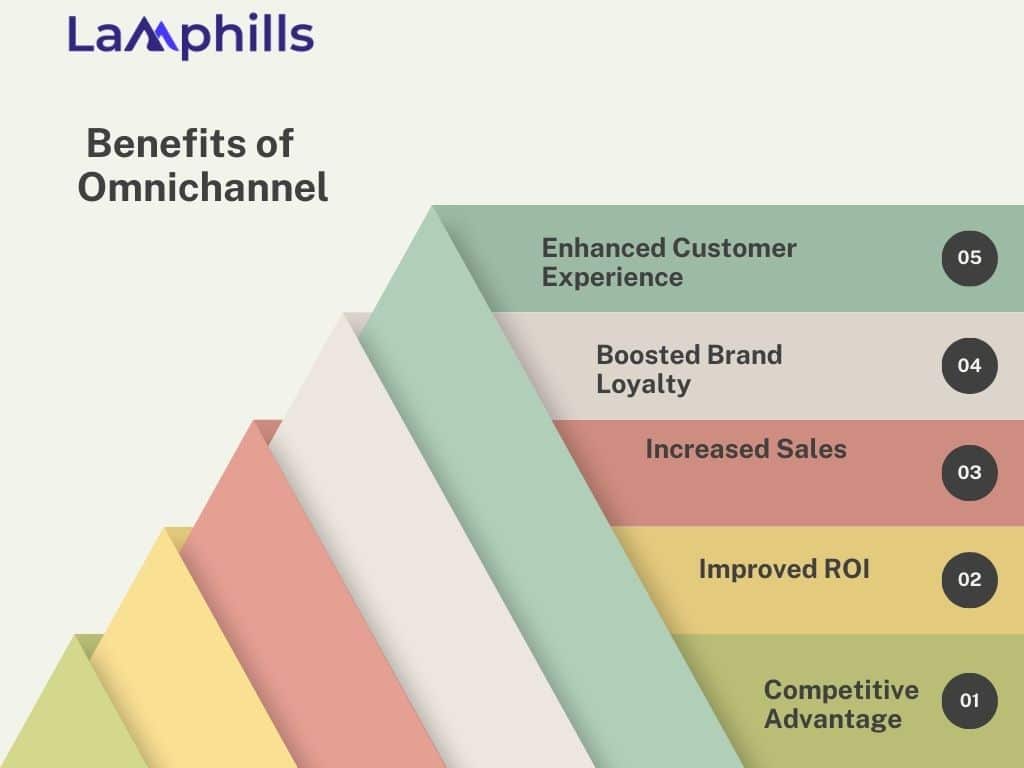When I first got into marketing, I kept hearing about Multichannel vs Omnichannel Marketing”. At first, I thought they were the same thing, but they’re actually quite different. I learned this the hard way through trial and error. Multichannel marketing is like handling different platforms separately, like running email campaigns, social media posts, and ads without them being connected. Omnichannel is more about linking everything together so that the customer has a smooth experience across all channels. In this article, I’ll break down how to choose between these two strategies to help you get the best results.
Key Points
- Multichannel vs Omnichannel Marketing: Multichannel marketing uses multiple separate channels to engage customers, while omnichannel marketing creates a unified, seamless experience across all channels.
- Omnichannel marketing improves customer experience by making interactions consistent and personalized across every platform, which strengthens customer relationships and boosts satisfaction.
- Omnichannel marketing reduces friction in the buying process, leading to higher conversion rates and brand loyalty.
- Multichannel marketing is beneficial for businesses with limited resources, as it allows them to optimize specific platforms without the complexity of syncing all channels into a single strategy.
- Omnichannel marketing is ideal for businesses looking to invest in creating a consistent and customer-first experience across all platforms, which can significantly increase customer retention, sales, and brand loyalty over time.
Multichannel vs Omnichannel Marketing

Credit: Freepik
The main distinction between omnichannel vs multichannel marketing is that multichannel usually focuses on a few specific channels, while omnichannel involves connecting all available channels.
What Is Multichannel Marketing?
Multichannel marketing is a strategy that uses several channels to reach your customers. It works by engaging people at different stages of their shopping journey and linking the various ways they interact with your brand. This connection helps ensure your customers get your message, whether it’s through emails, social media, or in-store promotions.
Take this as an example: You send an email reminding someone they left an item in their shopping cart. That’s multichannel marketing at work. This approach can even evolve into omnichannel marketing, a broader strategy, which we’ll explore later.
How Does Multichannel Marketing Work?
Multichannel marketing focuses on building links between the different ways your customers interact with your brand. Think about all the touchpoints your brand has, whether it’s in-store, online shopping, or during ads while they watch a video. These are the areas where you can start implementing your multichannel strategies.
The next step is to create a seamless and engaging experience for your customers, while also managing your resources well. You also want to avoid bombarding your customers with the same information across different channels keep the message fresh, whether it’s on social media, in an ad, or in your store. The aim is to make their experience with your brand flow smoothly between these different channels.
When Should You Choose Multichannel?
Multichannel marketing is a solid option when you’re working with limited resources and can’t dive into a full omnichannel strategy just yet. Since omnichannel demands more effort and coordination, multichannel can feel more manageable while still delivering good results.
The main perk of multichannel is its flexibility; each channel operates independently, so stakeholders can focus solely on optimizing their specific platforms without needing constant cross-channel communication.
That said, multichannel isn’t necessarily a low-cost solution. You’ll still need the right tools and infrastructure to grow, with marketing automation software being key to maintaining quality while scaling up.
What Is Omnichannel Marketing?
Omnichannel marketing takes things a step further by creating a unified experience across every channel your brand uses. It covers all the touchpoints in a customer’s journey, from when they first learn about your brand to after they’ve made a purchase.
Omnichannel marketing is like an expanded version of multichannel marketing, where all channels are connected to one strategy.
How Does Omnichannel Marketing Work?
Unlike multichannel marketing, omnichannel marketing ties all of your channels together into a single advertising strategy. Every omnichannel strategy includes multichannel marketing, but not every multichannel strategy is omnichannel.
Omnichannel marketing is not just about customer-focused content. For instance, you might sync ads across social media, newsletters, and in-store posters, making sure they’re all connected. This method also helps with tracking performance and sales, keeping everything streamlined.
When Should You Choose Omnichannel?

Credit: Freepik
If you’re willing to invest the time and resources, omnichannel marketing can be a game-changer for businesses of all sizes, including smaller e-commerce brands looking to grow.
While omnichannel does require a bigger commitment to maintain, the rewards like a smoother user experience, increased customer retention, better sales, and stronger brand loyalty make it well worth the effort. With a well-executed omnichannel strategy, you can create a unified experience that not only helps customers through their purchase journey but also turns them into loyal repeat buyers.
Once you know which strategy fits your business, make sure to invest in the right marketing software to bring it to life. Omnisend, for instance, is built to support not just e-commerce but also brands exploring all that omnichannel has to offer.
What Are the Benefits of Omnichannel?
Omnichannel marketing takes full advantage of multiple channels by seamlessly connecting them to provide key benefits like:

#1. Enhanced Customer Experience
Omnichannel marketing delivers a unified and consistent experience across all touchpoints, offering a personalized journey that makes customers feel valued and understood.
#2. Boosted Brand Loyalty
When customers have a seamless experience across various channels, they feel more connected to your brand. Google’s research reveals that 73% of consumers who feel valued stay loyal to brands, even if prices go up.
#3. Increased Sales
Omnichannel reduces friction in the buyer’s journey by allowing customers to move smoothly between platforms. This flexibility leads to higher conversion rates, as customers can complete their purchases wherever and whenever they choose. For example, fashion retailer Boohoo saw a 25% increase in revenue after linking its app and website to create a cohesive user experience.
#4. Improved ROI
Omnichannel marketing helps you spend smarter by focusing on the channels that bring the best returns. With tools like Omnisend, you gain a complete view of your campaign performance, allowing you to optimize your budget for maximum results.
#5. Competitive Advantage
In today’s market, standing out takes more than offering great products or discounts. According to a McKinsey study, 90% of U.S. consumers plan to keep switching brands until they find a differentiated experience. Implementing an omnichannel strategy positions your brand as one that’s committed to providing a seamless and customer-first approach, giving you a leg up on the competition.
What’s the Difference Between Multichannel and Omnichannel Marketing?
The key difference is that multichannel marketing uses a select number of channels, while omnichannel marketing involves all channels. Multichannel focuses more on engagement across different touchpoints, while omnichannel aims for a more unified and comprehensive brand experience.
In retail, for example, multichannel marketing might mean selling both online and in-store. Omnichannel marketing, on the other hand, is more fluid. It considers where customers are at any given moment and reaches them there be it through an online ad while they’re at home or a social media post. Multichannel retail follows a straight line from brand to customer, while omnichannel marketing wraps around the customer, providing a more connected experience.
How Do You Choose Between a Multichannel and Omnichannel Strategy?
The choice between a multichannel or omnichannel strategy really comes down to your business goals and resources. If your goal is to achieve specific brand objectives, a multichannel strategy might be the way to go. On the other hand, if you’re looking to elevate the overall customer experience and create a more cohesive brand journey, an omnichannel approach would likely serve you better.
You also have to consider what your brand can handle. For smaller businesses, diving straight into a full-blown omnichannel strategy might be overwhelming. It’s often smarter to start with a multichannel approach focusing on individual platforms like email or social media and gradually build up from there. You don’t need to launch a website, social media, email newsletters, and a marketing campaign all at once. Take your time to focus on each piece before expanding.
Ultimately, there isn’t a one-size-fits-all answer. You don’t have to stick to just one strategy, either. Multichannel and omnichannel can complement each other and work in tandem.
Download this Multichannel vs. Omnichannel Marketing Checklist to help you determine whether a multichannel or omnichannel marketing strategy is best suited for your business. It covers the key considerations, including resources, customer experience, tools, and goals.
Multichannel vs. Omnichannel Examples
#1. Jennifer Lopez’s Skin-Care Line
When Jennifer Lopez launched her skincare line with Guthy-Renker, they utilized a multichannel strategy to connect with customers in different ways. By creating a custom store and hosting a live stream with Lopez, they successfully attracted attention and made the launch a success.
#2. Omnichannel Grocery Shopping
Grocery brands are a great example of omnichannel marketing in action. Since many customers blend online and in-person shopping, a seamless omnichannel strategy ensures consistency across platforms. Additionally, a connected home approach helps brands reach customers wherever they are, while performance analytics track what’s working and what needs improvement.
#3. L’Oréal’s Omnichannel Success
L’Oréal used Amazon Marketing Cloud to implement an omnichannel strategy, optimizing ad frequency and ensuring their messages reached the right audiences at the right moments. They closely analyzed their campaigns to allocate resources effectively, improving both customer experience and brand performance.
These examples demonstrate how multichannel and omnichannel strategies can enhance visibility and customer experience and ultimately drive brand success.
#4. Apple’s Multichannel Strategy
Apple is a prime example of how to effectively implement a multichannel strategy, with a strong emphasis on the product. While they operate both physical stores and an online presence, Apple’s retail stores are designed to complement their e-commerce business rather than drive in-store sales directly.
These physical “iStores” function as separate touchpoints that contribute to the overall Apple experience. Customers can browse the stores much like galleries, free from the pressure to make a purchase. Apple’s multichannel approach gives each touchpoint whether it’s the iStores, the online platform, or Apple’s streaming services a distinct role in engaging customers and creating demand for their products. Beyond the stores, Apple expands its ecosystem through services like Apple TV+, Apple News+, and Apple Music, offering additional revenue streams while promoting its hardware across diverse channels.
#5. Amazon’s Omnichannel Success
Amazon takes omnichannel marketing to another level by centering everything around the customer. They’ve revolutionized the e-commerce landscape by putting customer experience at the forefront, leading many businesses to adopt their practices. Amazon knows its customers well, tracking every purchase to deliver a personalized experience at each interaction.
Whether it’s browsing on the site, receiving tailored recommendations, or engaging with their mobile app, Amazon ensures a seamless and consistent experience across every touchpoint. Their strategy has set a new standard for customer-first marketing, making them a leader in omnichannel success.
What Company Uses Multichannel Marketing?
#1. Amazon
Amazon is a standout when it comes to leveraging multi-channel marketing. The e-commerce powerhouse connects with customers through its website, app, physical stores, third-party sites, and even TV commercials. All these channels work in harmony to create a smooth and engaging experience. Imagine you spot a product on an Amazon TV ad; you can hop online to read reviews, check out demo videos, and compare prices. Or, if you’re near an Amazon brick-and-mortar store, you could grab the item on the spot. Regardless of the channel, Amazon ensures you find what you need and can buy it effortlessly.
Plus, Amazon’s multi-channel fulfillment model amplifies this experience, benefiting both customers and small business owners by making the shopping process even more convenient.
#2. Nike
Nike is another brand excelling at multi-channel marketing. With stores worldwide, an e-commerce site, catalogs, social media presence, and more, Nike weaves these platforms together to offer a cohesive customer journey. Their social media, especially Instagram, often teases upcoming products and events, building excitement before a release. Take the LeBron 17s, for instance—Nike hyped them up weeks in advance on Instagram. By the time they hit the market, people were already eager to buy. Nike shows how to use multiple channels to engage customers and create anticipation around new products.
#3. Warby Parker
Warby Parker, known for its eyeglasses, blends online and in-store shopping experiences through their innovative Home Try-On program. Customers can pick five pairs of glasses online, try them at home for free, and return any they don’t like—no strings attached. This approach gives people the chance to experience the product in their own time, without the pressure of an in-store purchase. It’s a great example of how Warby Parker uses multiple channels to deliver convenience and a customer-first experience. Programs like this have helped Warby Parker rise to the top of the eyeglass market without needing to rely heavily on traditional advertising.
Related Post
Ultimate Guide to Integrated Marketing Campaign + Famous Brand Examples.
Pillars of Omnichannel Management
15 Best Inbound Marketing Tools That Can Save Your Business in 2024






